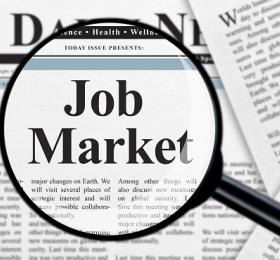
Another strong reading on the US labor market arrived this morning at 8:30 est. American employers added a healthy 250,000 jobs in October and unemployment held at 3.7%. Meanwhile, labor force
participation increased 0.2% to 62.9%. Revisions to August and September jobs data were a wash, and Hurricane Michael had little impact on the national employment situation. Wages even ticked up 3.1% year over year. In short, the labor market remains quite tight and last week’s GDP print was particularly encouraging, though somewhat misgiving with respect to some of the report’s internals (i.e.
inventories).
So, where are we now? Many latent market risks came home to roost at the start of the fourth quarter. Equities on a global scale suffered the worst month in years during October. European and Asian stocks were hit hardest. At this point, it is difficult to pin the blame on one factor or region. With tariffs slowing Chinese growth, the government has been forced to step in. Markets seem to be pricing in the possibility of a “no deal” Brexit, as Theresa May struggles with politicians at home and abroad. The pound has been concerning to us for some time now as talks with the EU have been thus far “inconclusive.” On the continent, the newly elected Italian government is playing games with the European Union and using its proposed budget as a bargaining chip- seems to be a common theme in southern Europe. While across the pond, political tensions simmer in anticipation of contentious midterm elections. It has only been a few days since President Trump announced more tariffs would be imposed on China if upcoming talks were not productive, but overnight he has changed his tune. Now, the White House is allegedly preparing a proposal for a trade deal with China. We shall see what happens in Argentina at the G-20 meeting. All of this is going on, and the Fed stays its course.
Earnings season has been a bright spot with all the headline risk coalescing somewhat simultaneously. US corporate entities continue to roll out record profits, but guidance has been somewhat lackluster. Tech stocks have been particularly hard hit in recent days. From the standpoint of earnings growth, the real question is: what is sustainable? If wage pressures mount in tandem with input costs and capital costs continue to escalate, how does that kind of margin pressure ultimately impact valuations? Let’s not forget that uncertainty is the enemy of growth. We have plenty of uncertainty, but it stems primarily from two quarters, geopolitics and monetary policy, both of which can turn on a dime. To be sure, there has been some economic softening in the emerging world as growth slows. However, a little stability in trade ties and a slightly less hawkish stance from the Fed could go a long way in reviving risk appetite. Incidentally, all asset classes struggled in October, not just stocks. The one place to be was cash.
Market Outlook: Bullish USD, Bearish Duration, Neutral Equities